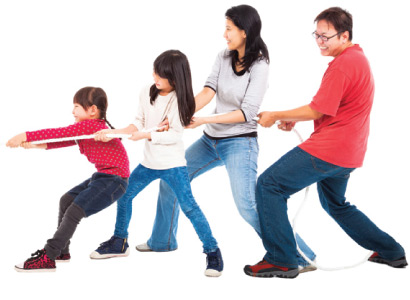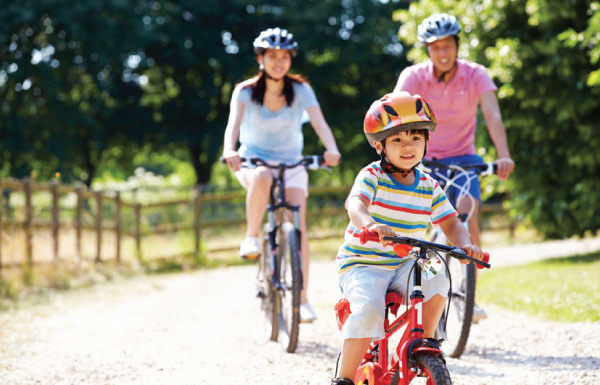As a parent, your child’s health should be your top priority. An important but often overlooked aspect is ensuring that he gets enough physical activity on a daily basis. The type of physical activity referred to here is the outdoor rather than indoor type and there is research linking physical activity to better sleep and attention, which ultimately results in improved learning in children.
Did you know?
The Ministry of Health recommends that children accumulate at least 60 minutes of moderate-intensity physical activity daily, preferably in a safe outdoor environment. Since children have a tendency to do physical activities in short bursts, it is simply practical to accumulate your child’s physical activity throughout the day.
Benefits of physical activity
Regular physical activity can provide him with numerous benefits such as helping to strengthen his muscles and bones, decreases his risk of non-communicable diseases (NCDs, such as heart disease, diabetes, and cancer), more conducive to better sleep, and also makes it much more likely that he will be academically motivated.
On the other hand, physical inactivity is known to increase one’s risk of NCDs. With that in mind, it only makes sense to instil the habit of regular physical activity as a part of your child’s routine early in life, in order that he will continue to be physically active in his adult life.
Research has also shown that physically active children tend to perform better academically. Among other things, children who are physically active also benefit from a boost in their cognitive and physical development, and improved social and emotional well-being.
Encourage your child to be physically active for a total of at least an hour or more daily. This need not be done in one continuous stretch but can be a combination of several rounds or activities. There are many options available, ranging from unstructured play to organised games/sports, such as taking family walks or playing physically active games (e.g. badminton, tag, etc.). Alternatively, you may also want to reconsider buying him toys or gadgets – get him something that encourages physical activity (e.g. a bicycle, skateboard, badminton racquet, etc.) instead.
Important points to consider
There are so many benefits to be gained from regular physical activity, so how can you encourage your child to do it? Here are some useful tips:

- Choose the right activities for his age and ability – be sure to pick activities that are appropriate for his age, development, and his physical abilities. The key is to ensure that he finds the activity fun and engaging in order for him to be motivated to do them, otherwise he may be bored or frustrated and refuse to participate.
- Limit his screen time (e.g. TV, computer games, etc.) – make it a point to encourage him to play games that involve some form of physical activity, such as futsal or badminton. However, you will need to lead by example! If you have an active lifestyle, your child will naturally gravitate toward it and try to emulate you.
- Make the time for it – you may need to make some sacrifices on your own time in order to give him plenty of opportunity to be active. Be sure that you do not over-schedule your child’s free time with extra lessons to the extent that he has no free time left for some unstructured playtime.
- The right tools for the right job – some activities/sports may also require equipment and a proper location (e.g. for your child to play futsal, he will need sportswear (appropriate clothing and shoes, a soccer ball, and a futsal court)
- Don’t overdo things – be sure to teach him to listen to his body; if he feels any pain or over-exertion, he should either slow down or stop the activity. You may need to monitor your child initially until you are sure that he is in tune with his body.
Safety first
Regardless of what physical activity you encourage your child to partake, always make safety the number one priority. In addition to having adequate protective equipment (e.g. helmets, wrist/knee pads, etc.) the location itself should also be safe (i.e. cycling should be done in parks/cycling tracks and not on the main road). If your child has a disability, please consult with your paediatrician beforehand to determine what type of physical activity is suitable.
An educational contribution by Malaysian Paediatric Association.






Comments